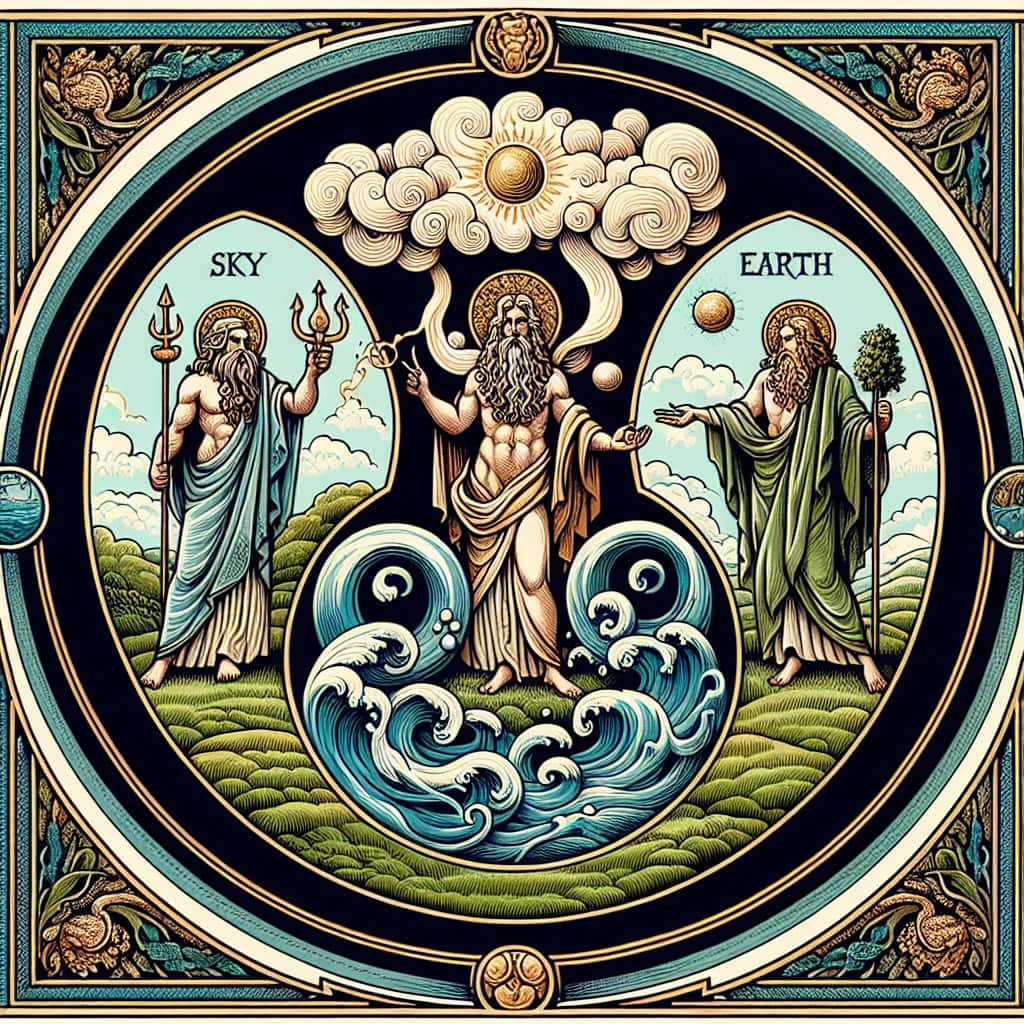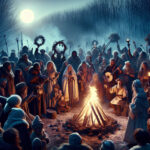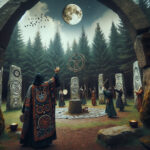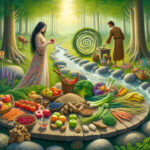The Pagan Trinity is a concept that has been around for centuries. It is believed to be a form of spiritual guidance that has been passed down through generations. The Pagan Trinity is not limited to any one religion, but rather is a concept that is found in many different belief systems across the world. This article will explore the Pagan Trinity and its meaning, as well as the role it plays in the lives of those who follow it. In addition, this article will explore the common symbols associated with the Pagan Trinity and how they are used in everyday life.
The Pagan Trinity is an ancient concept dating back to pre-Christian Europe. It is a trinity of gods or goddesses that represent a single entity, usually a triad of powerful natural forces. The Pagan Trinity is a recurring theme in mythology, literature, and art from various cultures around the world, including Greek, Roman, Norse, and Celtic mythology. In some cases, the Pagan Trinity is used to symbolize the unity of the three realms of the cosmos, or to represent the three stages of life. In other cases, it is used to symbolize the power of love and the threefold nature of the divine.
What is the Pagan Trinity?
The Pagan Trinity is the idea of three separate divine entities that are each part of a larger whole. In many cases, these divine entities are three gods or goddesses, though they may also be three aspects of a single deity. The three members of the Pagan Trinity are often associated with different aspects of the natural world, such as the sun, the moon, and the earth. The Pagan Trinity is also sometimes used to represent the threefold nature of the divine, such as with the Greek trinity of Zeus, Poseidon, and Hades.
The Pagan Trinity is closely related to the concept of the Triple Goddess, which is a single deity that has three aspects, usually represented by the Maiden, Mother, and Crone. In some cases, the Pagan Trinity may consist of a Maiden, Mother, and Crone, who each represent a different aspect of the same divine being. In other cases, the Pagan Trinity may consist of three separate gods or goddesses.
Examples of the Pagan Trinity in Mythology
The Pagan Trinity is a common motif in many mythologies, including Greek, Roman, Norse, and Celtic mythology. In Greek mythology, the three members of the Pagan Trinity are often referred to as the Olympian gods, and include Zeus, Poseidon, and Hades. In Norse mythology, the three members of the Pagan Trinity are Odin, Thor, and Freyr. In Celtic mythology, the three members of the Pagan Trinity are often referred to as the Three Realms of the Cosmos, and include the Land of the Living, the Land of the Dead, and the Land of the Faeries. In each of these mythologies, the three members of the Pagan Trinity are closely intertwined, and often represent a single divine being.
The Pagan Trinity in Literature and Art
The Pagan Trinity is also a common theme in literature and art. In literature, the Pagan Trinity is often used to symbolize the power of love, and the threefold nature of the divine. In art, the Pagan Trinity is often represented by three interlocking circles, or by a triskelion, which is a symbol consisting of three interlocking spirals.
The Pagan Trinity Today
The Pagan Trinity is still a popular concept today, particularly within pagan and Wiccan faiths. In these faith traditions, the Pagan Trinity is often used to symbolize the unity of the three realms of the cosmos, or to represent the three stages of life. The Pagan Trinity is also often used to symbolize the power of love and the threefold nature of the divine.
The Pagan Trinity is an ancient concept that remains relevant today. It is a powerful symbol of unity, love, and the threefold nature of the divine. Whether it is used to symbolize the unity of the three realms of the cosmos or to represent the power of love, the Pagan Trinity is a powerful and enduring symbol.
The pagan trinity is an important part of the spiritual and religious beliefs of many cultures and religions. It is a powerful symbol of balance, harmony and unity, and it serves as a reminder of the interconnectedness of all things. By understanding the symbolism of the trinity, we can gain insight into the spiritual and religious beliefs of our ancestors and how they viewed the world. This understanding can help us to create a more unified and harmonious world for ourselves and future generations. By embracing the pagan trinity, we can learn to appreciate the interconnectedness of all things and the importance of balance and harmony.





